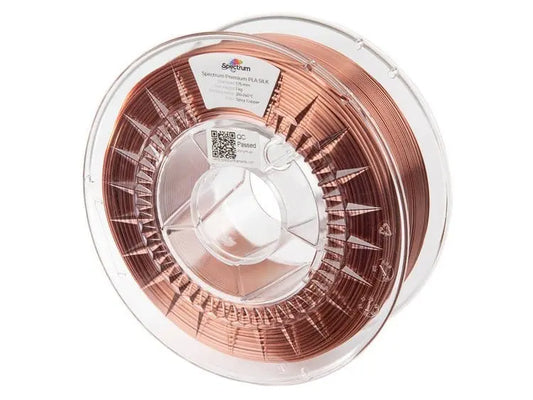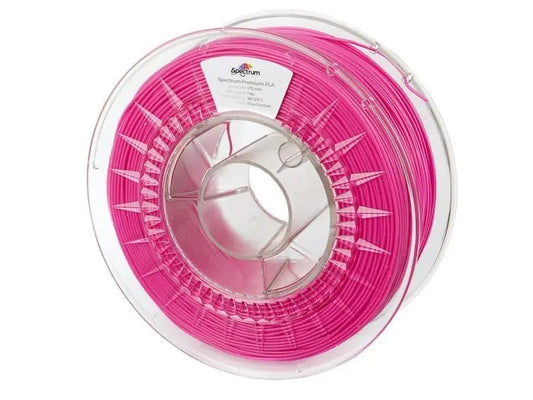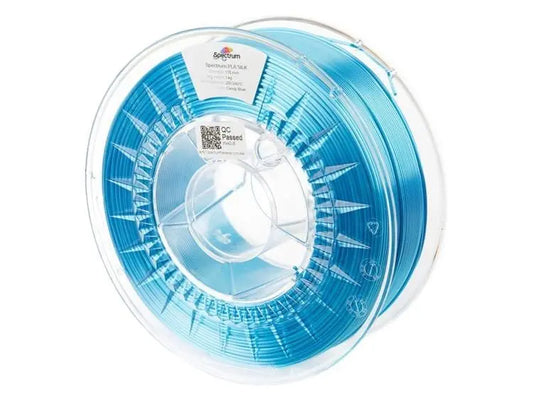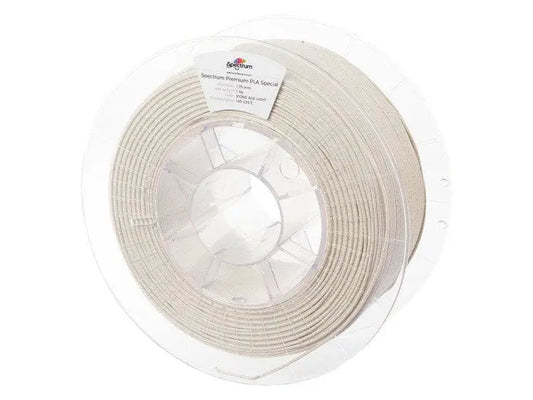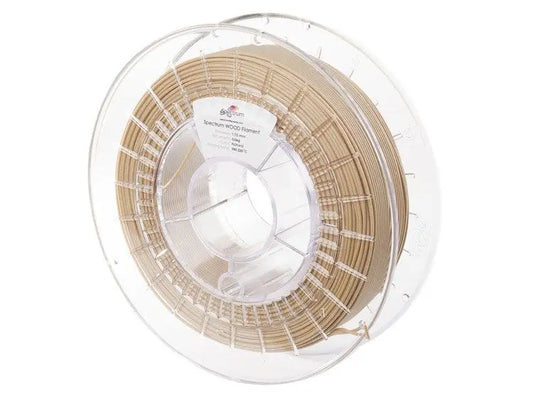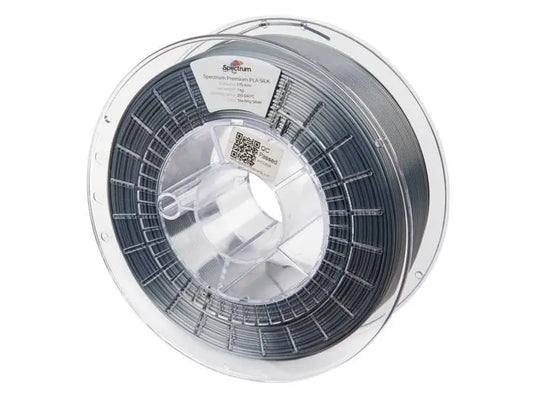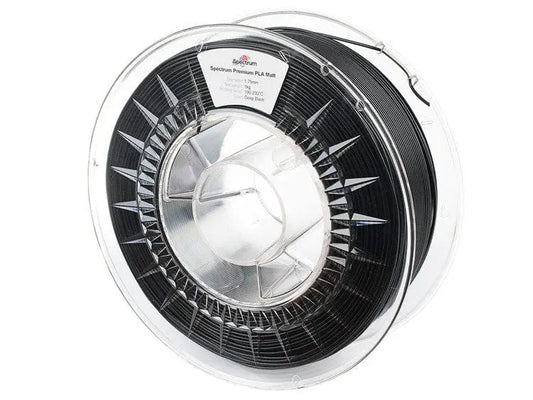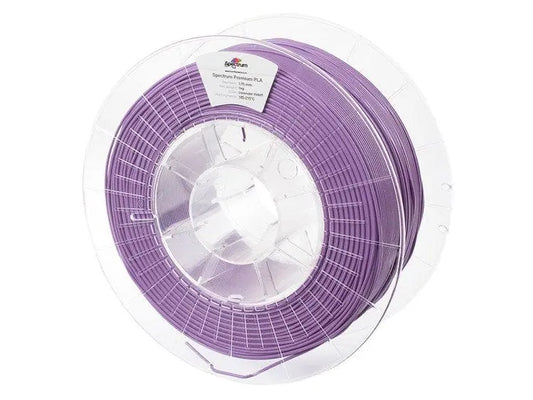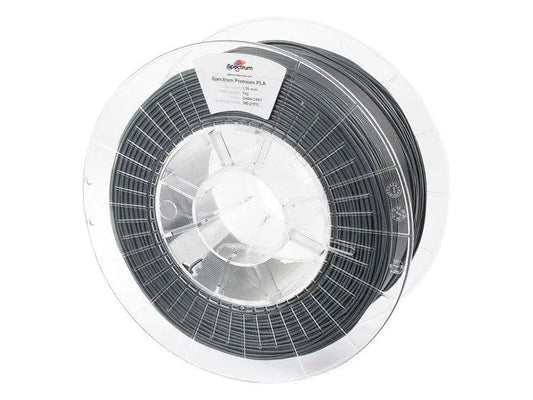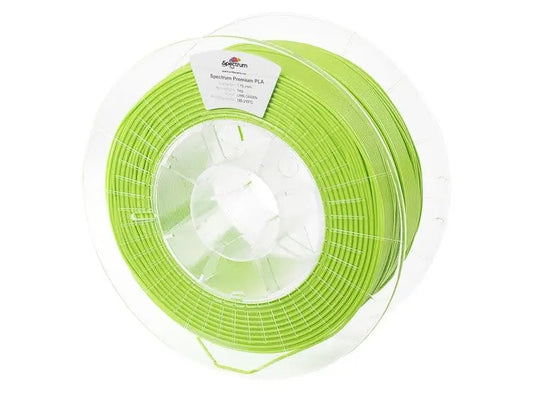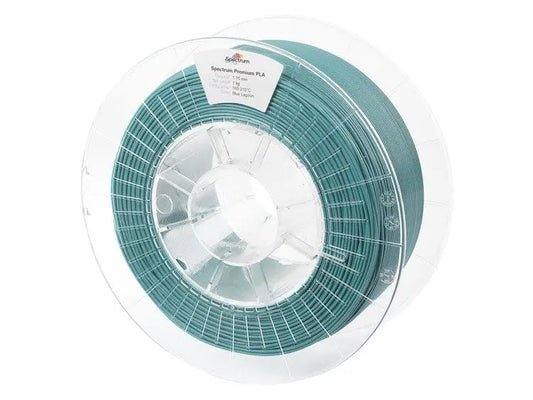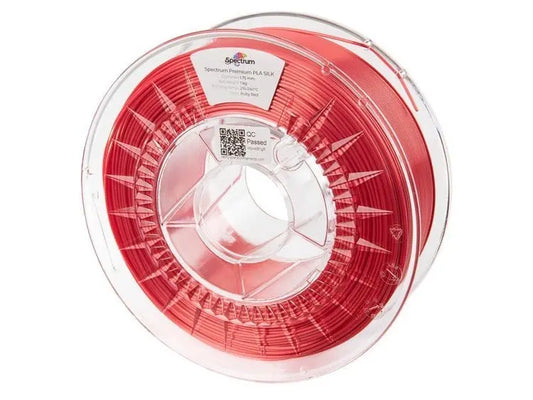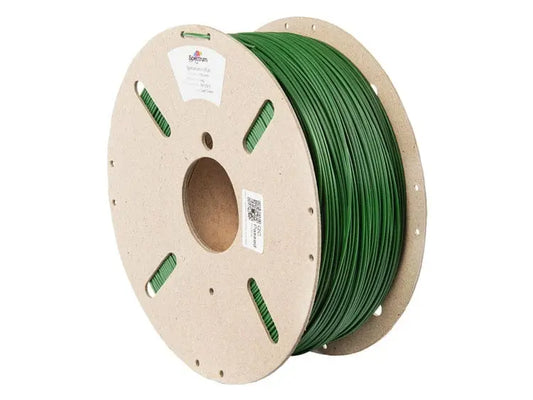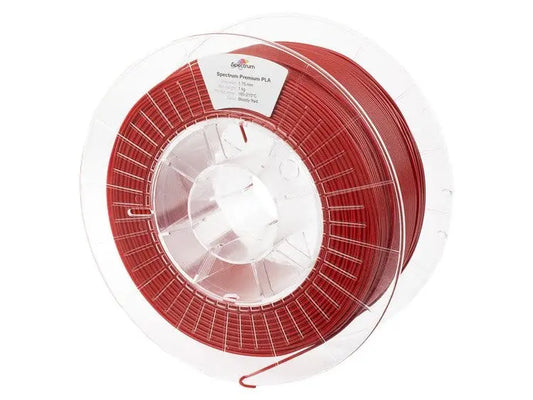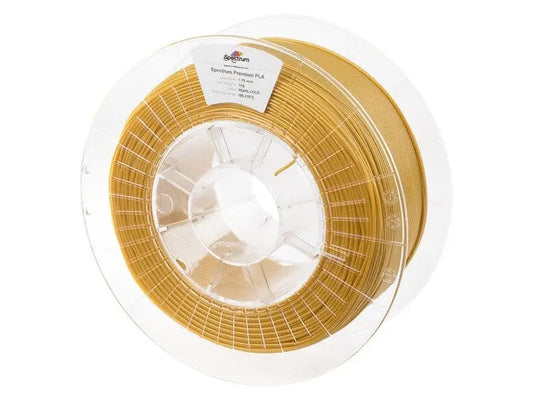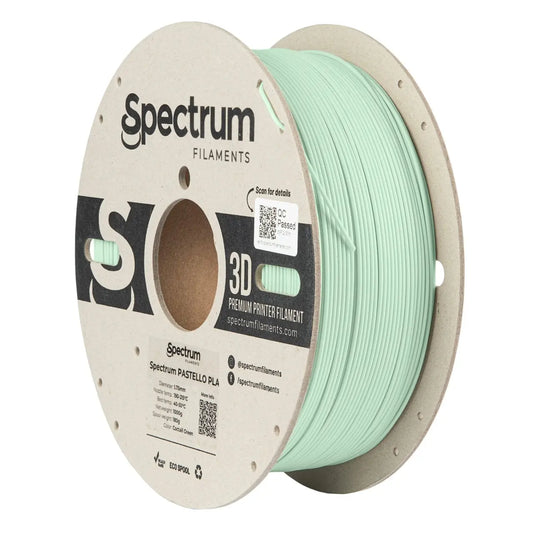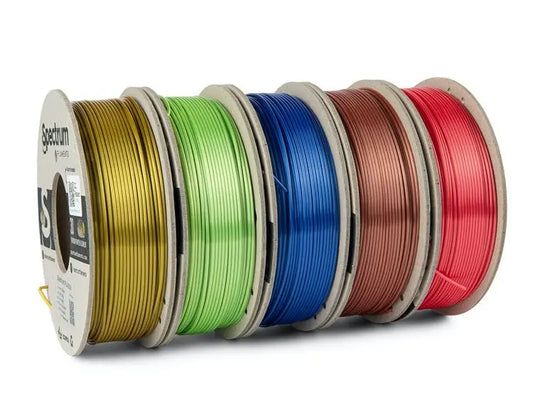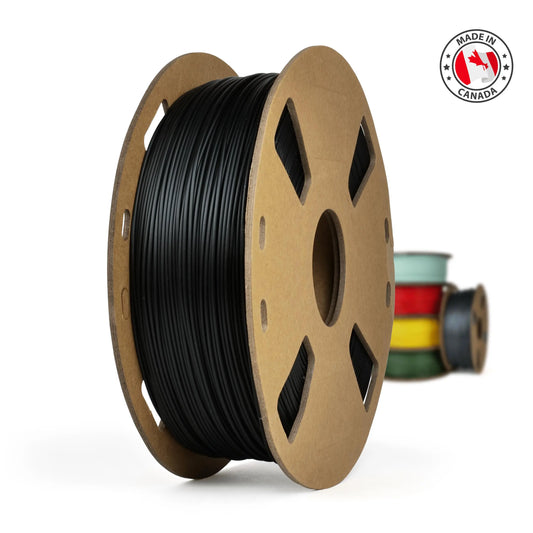Le filament d'acide polylactique (PLA) est un matériau thermoplastique populaire, généralement fabriqué à partir d'amidon de maïs et d'autres matières végétales. Comparé à d'autres filaments, il s'imprime à une température relativement basse, ce qui réduit le risque de déformation.
Notre gamme est largement utilisée dans diverses applications, des projets amateurs aux modèles éducatifs, en raison de sa résistance et de sa flexibilité. Impression 3D Canada , les filaments PLA sont disponibles en plusieurs couleurs et finitions, notamment mates, brillantes et plus encore.
Regardons rapidement notre collection de filaments PLA !
Types de filaments PLA
Notre collection est plus large qu'une ou deux variétés. Nous couvrons tous les types de filaments PLA, chacun possédant ses propriétés et ses utilisations uniques. Vous trouverez ci-dessous les trois catégories dans lesquelles nous les avons classés !
1. Filament PLA commun
PLA - Acide polylactique
Le filament PLA est utilisé dans de nombreux secteurs industriels ! Par exemple, grâce à sa non-toxicité, il est idéal pour les applications alimentaires. En revanche, sa facilité d'utilisation et sa résistance à la chaleur à basse température le rendent particulièrement apprécié pour la création de prototypes et de maquettes. C'est le filament idéal pour les utilisateurs d'imprimantes 3D inexpérimentés grâce à sa compatibilité, sa polyvalence et son prix abordable.
PLA+ - Acide polylactique+
Doté d'une résistance à la chaleur supérieure à celle du PLA traditionnel, le filament PLA+ absorbe moins d'humidité et présente un faible taux de rétrécissement. Il offre également une meilleure consistance, une meilleure rigidité et un meilleur état de surface, ainsi qu'une plus grande robustesse. Toutes ces propriétés le rendent idéal pour des applications telles que la fabrication de pièces de drones, de composants aérospatiaux, etc.
PLA haute vitesse
Le PLA ordinaire ne fonctionne pas bien à haut débit. Pour une vitesse d'impression plus rapide et une vitesse volumétrique plus élevée, le PLA haute vitesse est donc idéal. Il permet d'imprimer à des températures élevées, garantissant des impressions plus robustes et précises, avec des finitions plus lisses. Ce filament est adapté aux imprimantes 3D comme Creality et est utilisé pour diverses applications, notamment la fabrication de bijoux, de jouets et de pièces fonctionnelles.
2. Filament PLA artistique
PLA Soie
Le filament PLA Silk, connu pour sa finition brillante, ajoute un éclat luxueux aux objets imprimés et améliore l'apparence visuelle.
PLA Soie polychromatique
Un mélange de plusieurs couleurs dans un seul filament, que vous pouvez utiliser pour créer des impressions 3D dynamiques et colorées.
PLA mat
Il offre une finition non brillante et atténuée, réduisant les reflets lumineux pour une apparence subtile et sophistiquée, adaptée aux projets où l'éblouissement est un problème, comme la visualisation architecturale.
PLA Perle
Doté d'une finition nacrée, ce filament donne aux impressions un effet chatoyant rappelant la perle, important pour la fabrication de bijoux, d'ornements et de pièces décoratives.
PLA Bois
Il est idéal pour créer des prototypes réalistes, des modèles artistiques et des répliques de meubles. Le filament de bois PLA contient des fibres de bois ou des additifs.
PLA Métal
Le filament métallique d'acide polylactique est infusé de particules métalliques ou de finitions et produit des impressions avec un aspect et une texture métalliques, adaptés aux pièces fonctionnelles et aux conceptions à thème métallique.
PLA brille dans le noir
Ce filament artistique possède des propriétés phosphorescentes, permettant aux impressions de briller dans des conditions de faible luminosité après exposition à la lumière. Vous pouvez l'utiliser pour la réalisation de divers projets, de signalétique et d'objets fantaisie.
3. Filament PLA flexible
Mélange de PLA souple et d'acide polylactique
Il s'agit d'un filament d'impression 3D naturel et biodégradable offrant une excellente adhérence intercouche et une excellente durabilité. Le filament PLA souple est principalement utilisé dans le secteur médical pour la création de dispositifs médicaux, de prothèses et d'orthèses sur mesure nécessitant une flexibilité maximale.
Pour les services d'impression 3D , les exigences des produits et l'assistance à la conception, n'hésitez pas à nous appeler au +1-905-963-9066 !!
FAQ
Qu’est-ce que le filament PLA et quelles sont ses principales utilisations dans l’impression 3D ?
Le filament d'acide polylactique est un filament thermoplastique biosourcé fabriqué à partir de ressources telles que l'amidon de maïs ou la canne à sucre. Voici quelques-unes de ses principales utilisations en impression 3D :
- Prototypage de modèles et de pièces fonctionnelles
- Projets et modèles éducatifs
- Créations artistiques et sculptures
- Objets décoratifs et figurines
- Modèles et conceptions architecturales
- Articles ménagers et organisateurs
- Accessoires et bijoux personnalisés
- Pièces mécaniques à faibles exigences de résistance à la chaleur
Comment choisir le filament PLA adapté à mes projets d'impression 3D ?
Lors du choix du filament PLA pour vos projets d’impression 3D, tenez compte des facteurs mentionnés ci-dessous ;
- Tenez compte du diamètre du filament (1,75 mm ou 2,85 mm) compatible avec votre imprimante.
- Vérifiez les options de couleur en fonction de l’esthétique ou des exigences de votre projet.
- Assurez-vous que la plage de température d’impression du filament correspond aux capacités de votre imprimante 3D.
- Lisez les avis et les commentaires des utilisateurs pour évaluer les performances et la fiabilité du filament.
- Testez des échantillons ou des bobines plus petites avant de vous engager sur des quantités plus importantes pour des projets critiques.
Le filament PLA est-il différent du filament PLA+ ?
En effet ! Le filament PLA+ (acide polylactique+) est une version améliorée du PLA, offrant généralement une résistance, une durabilité et une résistance à la chaleur accrues, tout en conservant les propriétés écologiques du PLA. Les filaments PLA+ sont conçus avec des additifs ou des modifications pour obtenir ces caractéristiques améliorées, ce qui les rend adaptés aux applications d'impression 3D plus exigeantes.
Qu'est-ce qui rend le filament PLA Soft Polylactic Acid Blend unique ?
Le filament PLA Soft à base d'acide polylactique allie la facilité d'impression du PLA à la souplesse de matériaux plus souples comme le caoutchouc. Il est conçu pour les projets nécessitant des impressions souples et résistantes, comme les dispositifs médicaux flexibles, les textiles, les jouets et autres applications où la rigidité du PLA traditionnel est inadaptée.


